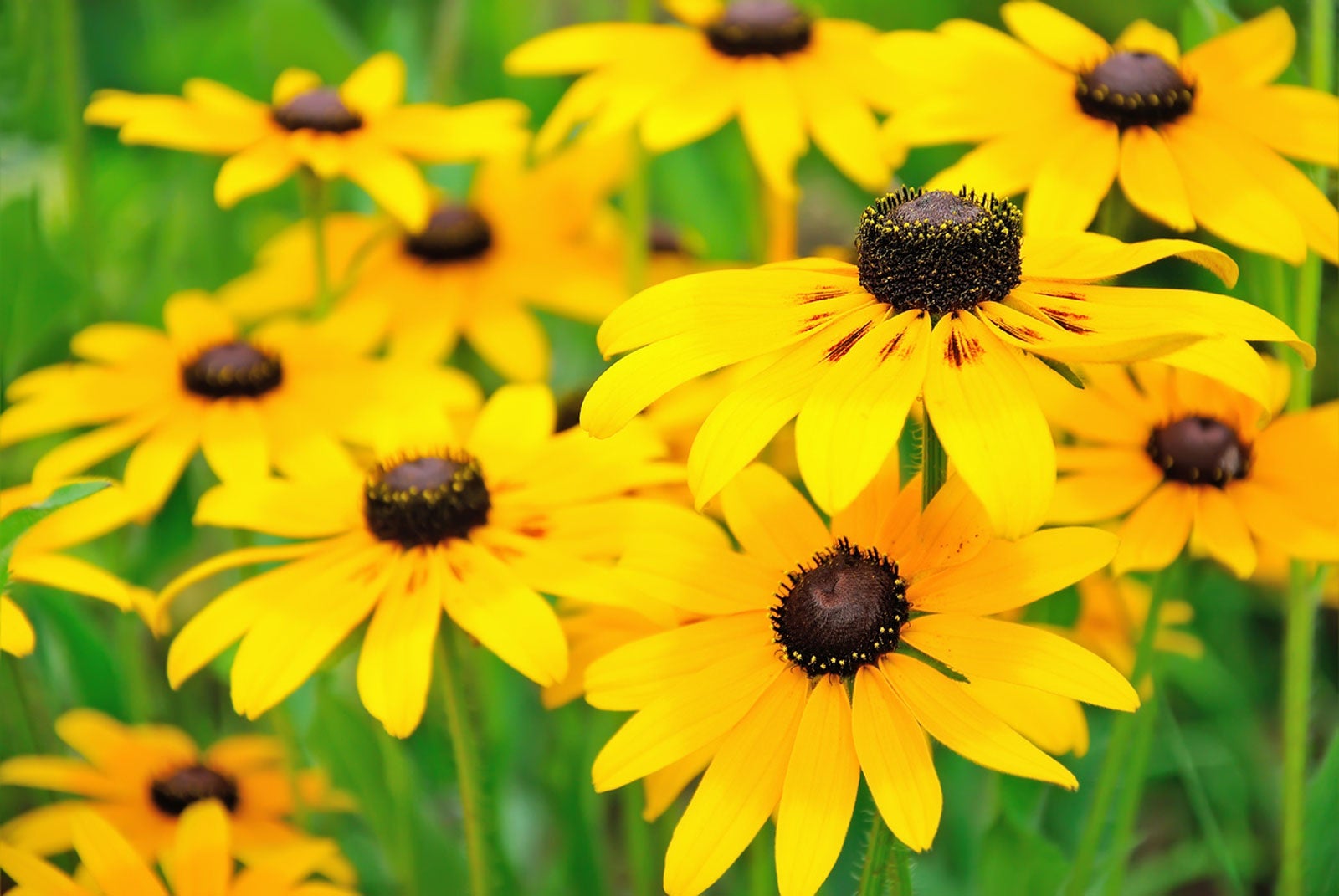Learn About Black Eyed Susan Care
Rudbeckia, or black-eyed Susan, is a favorite daisy-like flower that's heat and drought-tolerant, and lights up a garden with its cheerful bright yellow color.


The black-eyed Susan flower (Rudbeckia hirta) is a versatile, heat and drought-tolerant specimen that is included in many landscapes. Black-eyed Susan plants grow all summer long, providing perky color and velvety foliage, requiring little care from the gardener.
Black Eyed Susan Care
As with many wildflowers, growing black eyed Susans is simple and rewarding when blooms brighten the garden, natural area or meadow. A member of the daisy family, black eyed Susan flowers go by other names, such as Gloriosa daisy or brown eyed Susan.
Black eyed Susan plants are drought resistant, self-seeding and grow in a variety of soils. Growing black eyed Susans prefer a neutral soil pH and a full sun to light shade location. Black eyed Susan care will often include deadheading the spent blooms of the flower.
Deadheading encourages more blooms and a sturdier, more compact plant. It also can stop or slow the spread of the flower, as seeds are contained in the blooms. Seeds may be allowed to dry on the stem for reseeding or collected and dried in other ways for replanting in other areas. Seeds of this flower do not necessarily grow to the same height as the parent from which they were collected.
The black eyed Susan flower attracts butterflies, bees and other pollinators to the garden. Deer, rabbits and other wildlife may be drawn to black-eyed Susan plants, which they consume or use for shelter. When planted in the garden, plant the black-eyed Susan flower near lavender, rosemary or other repellent plants to keep wildlife at bay. Remember to use some of the flowers indoors as cut flowers, where they will last a week or longer.
Black Eyed Susans Flower Varieties
Black eyed Susan plants may be annual, biennial or short-lived perennials. Heights of various Rudbeckia reach from a few inches (7 cm) to a few feet (1.5 m.). Dwarf varieties are available. Whatever the landscape situation, most areas can benefit from the yellow petaled blooms with brown centers, which begin in late spring and last throughout the summer.
Sign up for the Gardening Know How newsletter today and receive a free copy of our e-book "How to Grow Delicious Tomatoes".

Becca Badgett was a regular contributor to Gardening Know How for ten years. Co-author of the book How to Grow an EMERGENCY Garden, Becca specializes in succulent and cactus gardening.